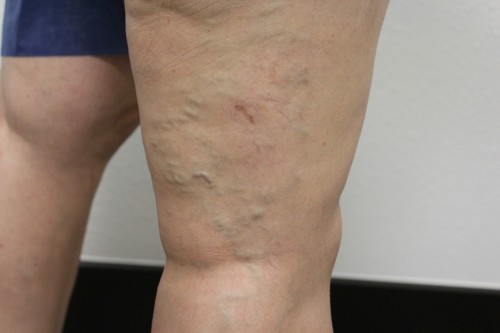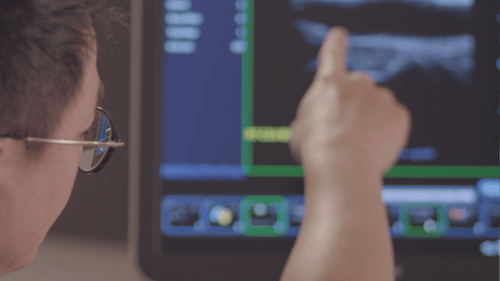Information about varicose veins typically addresses the commonly recognized symptoms such as leg pain, cramps, diminished function, and low blood circulation, however, there are many other health problems believed to be associated with untreated varicose veins. These problems can have a significant impact on a person’s overall health. Following are some serious health problems that can occur in conjunction with the presence of varicose veins.
Deep Vein Thrombosis – Varicosity occurs in superficial veins, which are part of a secondary venous system and run just below the skin surface. These veins connect to deep veins, the primary venous system. Problems occurring in the secondary system can lead to more serious issues in the primary system.
When varicose veins disrupt normal circulation, it can create a stagnant blood flow, enabling blood clots to form in the diseased veins and nearby vessels. When blood clots are present in a deep vein it is known as deep vein thrombosis (DVT). These clots are particularly dangerous as they are within the primary blood flow. If they break free, these clots can travel to the lungs with serious consequences including pulmonary embolism. It is important to treat varicose veins as a preventative measure against deep vein thrombosis.
Post-Surgical Blood Clots – Untreated varicose veins have been identified as one of the causes of post-surgery blood clots. The U.S. National Institute of Health shared a long-term medical study which validated the increased risk in a significant number of cases. These health risks are particularly notable with surgery on hips, knees, wrists, and other joints. Many orthopedic surgeons now require the treatment of varicose veins prior to surgery.

Leg Swelling – Varicose veins cause a reflux, or backflow of blood. This disruption in flow leads to immense pressure in the veins, especially in the lower leg where the force against gravity is greatest. When the pressure becomes too much, fluid can be forced out through the vein walls into surrounding tissue. This can affect the tissue, leading to pain and leg swelling.
Studies also show inflammation in the blood when venous reflux occurs. This inflammation can cause swelling. The leg swelling can be subtle, sometimes only noticeable by a tight sensation in the skin. In some cases, the swelling can subside overnight while the leg is in a horizontal position, increasing throughout the day.
Skin Infections – The twisting and bulging of varicose veins against the skin’s surface can cause irritation, stretching, and other changes to the skin. The skin can become thin, shiny, or hard, sometimes taking on a blue, purple, red, or brown color over the affected area. These changes compromise the protection normally provided by the dermal layer and makes the skin susceptible to bacterial infections.
Varicose Eczema – Usually caused by varicose veins, this painful condition is a result of venous and blood flow deficiencies. This is a long-term condition noted by the appearance of patchy, irritated skin, that is usually red, purple, or brown. The skin becomes itchy, dry, and flaky with a crusty or scaly appearance. Treating the underlying varicose vein issues should alleviate the problem.
Skin Ulcers – An ulcer is a break in the skin that will not heal. The combination of skin tension, irritation, damage, and reduced tissue nourishment from varicose veins, creates conditions under which the skin is not regenerated in a normal, healthy manner. Minor sores can turn into painful skin ulcers. If a skin ulcer is a result of untreated varicose veins, temporary results may be achieved with compression bandages. However, permanent treatment of the underlying problem is necessary to prevent recurrence.

Lipodermatosclerosis – Characterized by a hardening of the skin and inflammation of the layer of fat beneath the skin, lipodermatosclerosis causes pain, discoloration, swelling, and a tapering of the legs above the ankles. Its underlying cause is often associated with obesity, venous deficiency, and varicose veins.
Bleeding – Varicose veins are bulging vessels and carry a larger volume of blood than healthy veins. Any cut or injury to a varicosed vein may lead to above average bleeding or bruising. Stopping the bleeding may take more time than with healthy veins.
As you can see, the health risks and complications related to varicose veins are varied in nature and degree of risk. Symptoms should be professionally diagnosed by a doctor specializing in the treatment of vascular disease and certified as a vascular surgeon. If you feel you might be at risk and a candidate for varicose vein treatment, do not hesitate to contact a medical professional today.
Those in Southern California near Riverside, Temecula, Ontario, or Victorville should contact Empire Vein & Vascular Specialists, the area’s top vascular treatment center. The highly regarded medical staff features board-certified vascular surgeons and 5-star customer reviews. To schedule a free consultation, call 1-800-827-4267 now.